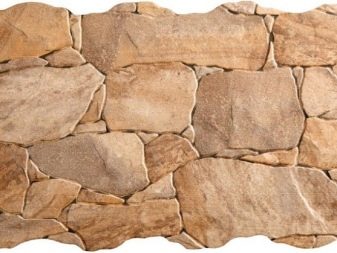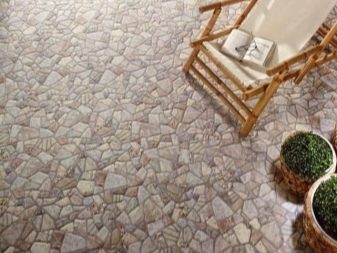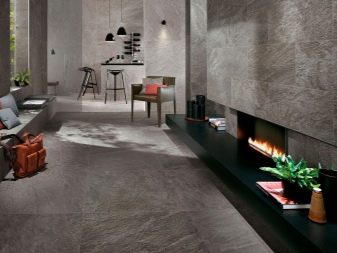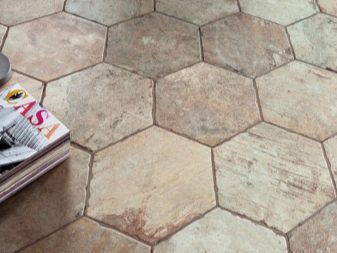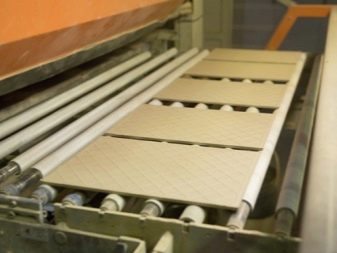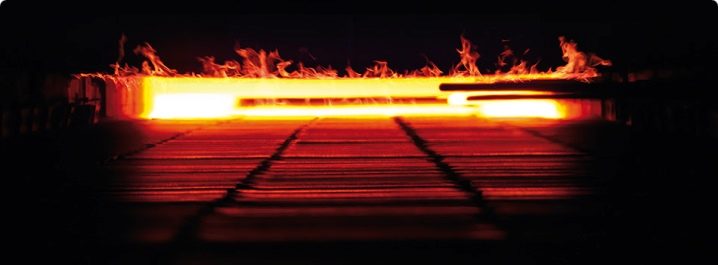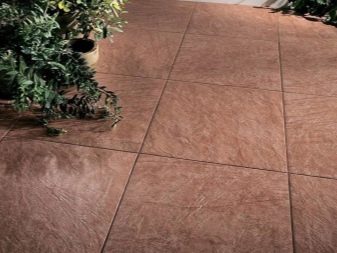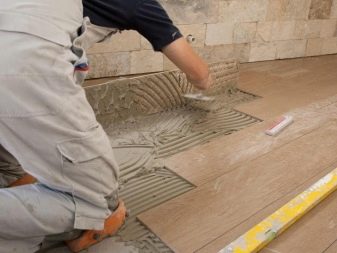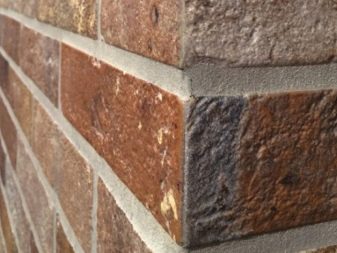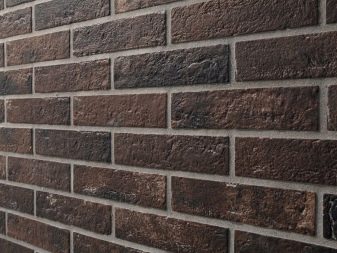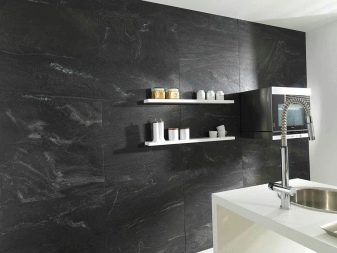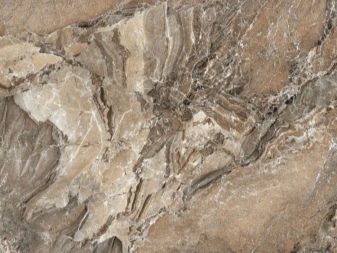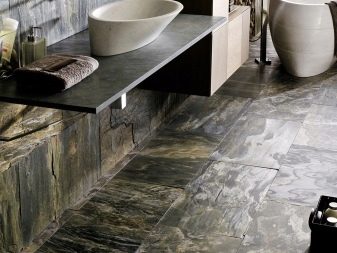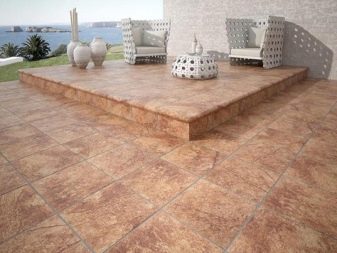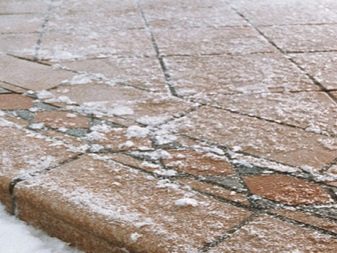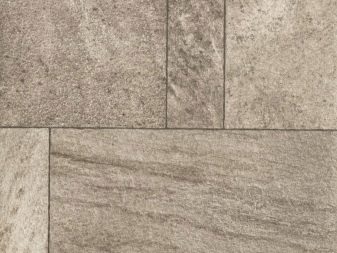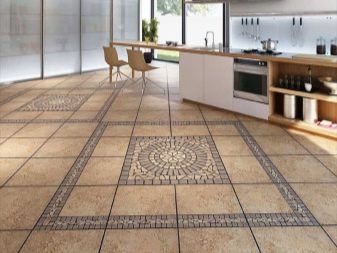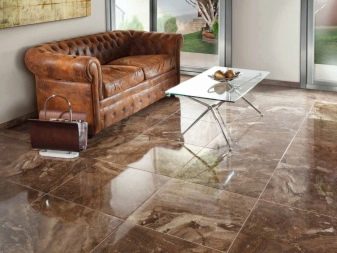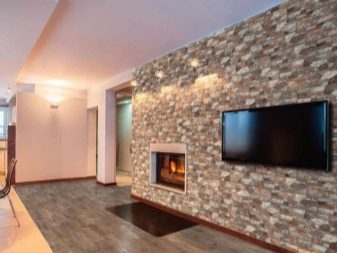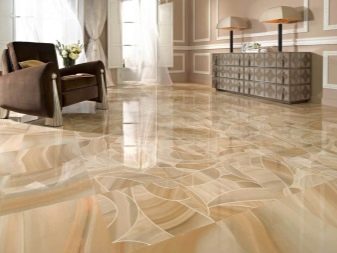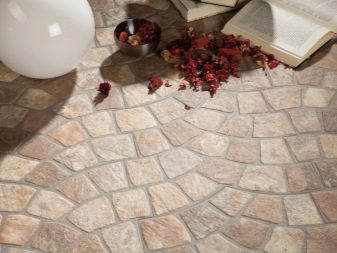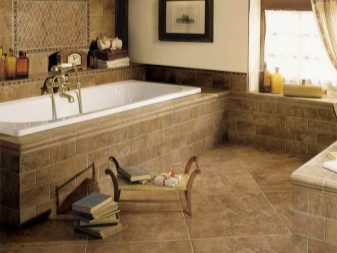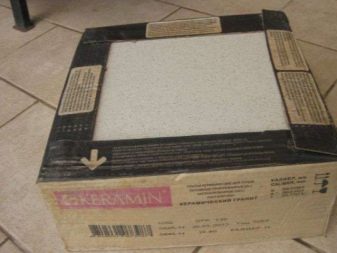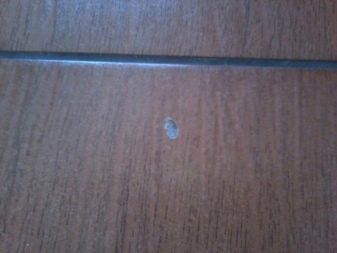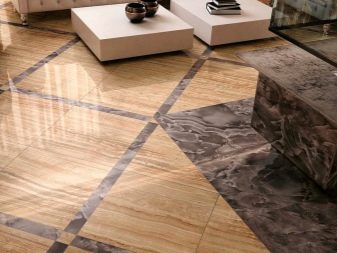Stoneware under the stone: types and features
Porcelain stoneware is often used in the design of premises due to the fact that it can be used to imitate various materials and to preserve their advantages. This finishing material has a diverse texture and perfectly imitates masonry, wood, leather or metal coating. With the help of ceramic granite, you can create a unique decoration of the room. In this article we will look at the types and features of porcelain stoneware under the stone.
Production features
A variety of material is achieved through technological features in its manufacture.
Production consists of several stages:
- the raw material undergoes preliminary preparation, is crushed and mixed in the required proportions;
- then the resulting mass is pressed, and future tiles are formed from it;
- products are roasted.
The desired pattern is obtained during the pressing process, performed in several stages. Depending on the raw materials used, there is a different finished product: under a stone or another type. At the first pressing receive the tile. After that, a thin layer of a special composition is applied to it and pressed again. Upon completion of pressing the product is subjected to firing. Thanks to special compositions, porcelain can be made with imitation, for example, under onyx or other stone.
Subject to roasting tiles are obtained with a rough matte surface. Such porcelain tiles are well suited for the floor as a reliable, abrasion resistant and safe coating.
To obtain materials with a glossy, smooth or embossed surface, special mineral salts are applied to the tile before firing. Thus, it turns polished and shiny satin porcelain stoneware.
If glaze is applied to the tile before firing, the result will be glazed granite.These types of finishing materials also have a rough surface, but since they have less wear resistance, they are used for wall decoration.
To make seamless installation of porcelain tiles, they are rectified - the ends are additionally processed, achieving identical geometric parameters. This tile with cuts at an angle of 90 degrees can be laid close to each other, which will create the illusion of a monolithic surface.
Species
Imitation of finishing material may be different. One of the most popular is the finish under the brick. Such porcelain stoneware will harmoniously look in the interiors of modern style (loft, minimalism). Usually one of the walls of the room is finished with a similar material.
Porcelain tile can be imitated under the following natural stones:
- granite;
- marble;
- limestone;
- onyx;
- basalt;
- slate;
- jasper;
- tuff;
- dolomite;
- gems and others.
Benefits
In addition to excellent external qualities, porcelain has a lot of remarkable properties, thanks to which it has wide application in interior decoration.
These include:
- Abrasion resistance.The tile is not erased even in rooms with high traffic and pollution.
- Hardness. Thanks to modern technologies, its high level is reached, tiles perfectly resist the load on fracture.
- Moisture resistance. It has a high density and lack of pores, therefore, has a high rate.
- Frost resistance Easily withstands cold to minus 50 degrees.
- Inertness to chemicals. Not subject to deterioration from aggressive liquids, solvents and dyes.
- Color fastness Appearance does not change.
- Fire resistance Not subject to burning.
- Environmental friendliness. Does not release hazardous substances.
- Low electrical conductivity. Absolutely safe, no static voltage;
- Hygiene. Not exposed to molds and bacteria, easy to clean.
The disadvantages of porcelain
A material with a mass of virtues still has some drawbacks, these include:
- Fragility. It is necessary to be careful during the transportation, and also to lay a tile on ideally plain surface.
- Difficulties with pruning. It is quite difficult to cut porcelain stoneware (unlike ordinary ceramic tiles) due to its density.
In the interior
The tile can be used in various settings, but there is no need to veneer the entire wall - the finishing of the part of the floor will look much more interesting. This option will highlight the structural elements of the interior.
Due to its durability, porcelain is indispensable for finishing the floor of high-traffic areas, such as hallways. Also, porcelain stoneware is perfect for finishing the working area of the kitchen and protruding elements of the interior, for example, columns. This material will be able to finish the flight of stairs.
By means of a tile under a natural stone it will turn out to recover and make more stylish a drawing room. To do this, you can revet the fireplace. Using such material, it will turn out to supplement door and window openings, making them more attractive.
One of the options for porcelain stoneware under natural stone is onyx tile. This semi-precious stone, obtained from the bottom of thermal springs, has been valued since ancient times. The material has a large color palette, from white to gray. Tiles made of porcelain stoneware for onyx are suitable for any room: living room, bedroom or bathroom.
When using tiles in residential areas you need to have a sense of proportion. Full wall cladding of a room with stone material will be appropriate and original for bars and restaurants.
Due to its properties, this finishing material is excellent for facing bathrooms and toilets. To create a unique interior, you should contact an experienced designer, who will tell you what kind of porcelain stoneware suitable for the style of your room.
How to choose?
In order not to be mistaken in the choice of material, use the following tips:
- buy tiles only in specialized stores;
- find out the composition and quality characteristics of the purchased products;
- check tile for chips and cracks;
- to determine the quality of the material, swipe with a felt-tip pen or a marker on the polished surface - on a tile of good quality, the mark can be easily erased after a few minutes;
- Ask the seller about the weight of one square meter of tile.
The ratio of weight to tile thickness of 8-8.5 cm should be 18.5-19 kg. If this indicator is different from the norm, then it indicates violations of technology in the manufacture.
The use of porcelain stoneware for finishing your home or office is not just a tribute to fashion, but a good opportunity to decorate the interior expensive and beautiful, taking into account long-term operation.
See how to make your own ceramic stoneware, see the next video.

